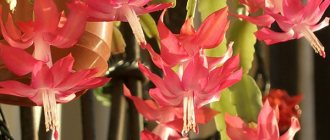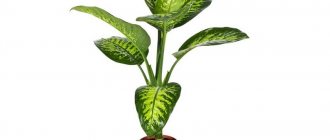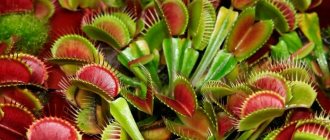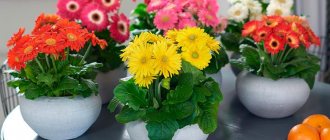Types and varieties of indoor gerberas
Each modern variety is a hybrid gerbera , which is bred from 2 species: the classic green-leaved and Jameson.
Varieties that have compact and low stems are suitable for the windowsill, these are:
- Festival - in the photo you can see that it has a short stem, and even larger flowers that have a variety of shades.
- Aldebaran and Alcor - they have small flowers and narrow leaves.
- Jupiter, Vega, Migar - they have narrow leaves and medium-sized flowers.
- A mix is a combination of many varieties with flowers of different shades.
Indoor gerbera: care at home
Growing a crop on a windowsill is quite simple, you just need to follow agricultural techniques, and you can grow a wide variety of varieties yourself.
The soil in which the plant is sold is not always suitable for its long-term cultivation, so the gardener is faced with the question of how to replant the gerbera after purchase.
It is not recommended to add compost or fresh humus to the substrate.
Holes for drainage should be made in the prepared container, pour expanded clay onto the bottom, and then soil from 2 parts of leaf soil, and 1 part each of peat soil and sand.
After replanting, water the plant generously along the edge of the pot, so as not to get it on the foliage. Water with warm water. If water collects in the pan, drain it.
Lighting and temperature conditions
Gerbera in a pot prefers sunlight and fresh air . Because of this, the room where the flowers stand needs to be ventilated more often, but make sure that there is no draft wind.
The temperature in the room in summer should be +16-20°C, and in winter, when the culture is at rest, then +12-14°C.
Gerbera naturally grows in the tropics, so it tolerates heat more easily than cold . In winter, a pot with a plant can be placed on a glazed loggia with an air temperature of +12-14°C, but for a short time. It is not recommended to radically change the temperature, as this reduces the flower’s resistance.
Watering
Home gerbera loves water ; water it often, but not too much, as the rhizomes may begin to rot.
Water, being careful not to get it on the leaves.
But it’s even better if you pour the water into the tray and drain the excess from it a few minutes after the gerbera has absorbed the moisture. Water for irrigation should have a temperature of +20°C. In winter, water the crop less often.
Air humidity
Since it is impossible to spray the crop from a spray bottle , because moisture should not get on the leaves, you can purchase an air humidifier. It is also good to place wide basins of water near the gerbera. Or you can pour wet pebbles into the tray.
Fertilizer application
Organic matter cannot be added. Therefore, buy fertilizer Forte, Biosad or others. From April to August, the crop is fed once every 3 weeks. When the buds open, the crop is fed with a composition containing a large amount of potassium .
And during dormancy - a mixture with a large amount of nitrogen . The fertilizer is heavily diluted with water to obtain a weakly concentrated solution.
Transplantation and soil requirements
The plant is replanted in autumn or winter. For transplantation, choose a container that is 2-3 cm larger in diameter.
If you decide to make the substrate yourself, then mix sand, humus, peat and turf soil in equal parts, add 2 parts of leaf soil and a little perlite.
Diseases and pests
Do not overwater the plant, otherwise the rhizomes will rot, and then the leaves and stem will begin to rot.
The plant may get gray rot. At the same time, a grayish coating is visible on the base of the foliage, peduncles, and flowers, and gradually the entire gerbera fades. If you find gray rot, then spray the plant with Fundazol, Rovral.
Powdery mildew may appear on young flowers. When the disease occurs, a whitish coating is noticeable on the petioles of the foliage. Then the plaque spreads to flowers, buds, and eventually the plant dies.
Attention! With excessive watering, the crop may become infected with late blight. If the air is too dry, spider mites may appear on the flower.
To cure a plant from diseases, spray it with Topaz or Fundazol.
Features of watering
The more magnificent the crown of a tree and the fleshier its leaves, the more actively the well-being of the family grows - this is what followers of Feng Shui believe. In addition, the abundant foliage of Crassula neutralizes negative energy. Correct and timely watering, carried out with a good attitude and love, can turn a young sprout into a full-fledged money tree.
This plant, like any living organism, has its own requirements for water quality. For example, its root system does not tolerate watering with cold tap water. Before moistening the soil in the pot, you should let the water settle and warm up to room temperature. It should be stored in an open container to allow the chlorine added to tap water to evaporate. Watering with melt water obtained by freezing in the freezer and then thawing will have an even better effect on the health of the flower - this way chemical impurities harmful to plants are removed from it.
Watering a money tree with a watering can
Watering the plant should be very moderate; it is recommended to do it from a watering can with an elongated spout; the water should flow slowly, without forming puddles in the root zone. If liquid seeps into the tray under the pot, it should be dried with a rag (and not left to soak back, as is done for other indoor flowers) a couple of tens of minutes after watering.
Additional Information. After moistening, the top layer of soil must be loosened to supply the roots with air.
The second way to water a money tree is to supply water through a tray in several passes until the substrate is completely saturated. At the same time, it is necessary to ensure that excess moisture does not remain in it, otherwise the roots may begin to rot.
Main problems when growing
Why do the leaves turn yellow?
With Alternaria blight, brownish spots are visible on the foliage.
Then the leaves begin to turn pale and turn yellow.
Also, with mosaic, yellowish-green spots appear, and then leaf necrosis develops.
It is best to treat gerbera with Radomil Gold.
This video once again shows how to properly care for indoor gerberas:
How to achieve lush flowering
Despite its love for bright sun, the plant stops blooming if there is too much light. Gerbera needs no more than 12 hours of daylight. It blooms most luxuriantly from late August to November.
If a gerbera does not bloom for more than 3 months, this means that the reason is not the light, but something else. A plant may stop forming buds if it is planted in a pot that is too large for it, then the crop directs all its energy to the growth of rhizomes. If you put nitrogen under the gerbera, it will also stop flowering.
Feeding
This indoor plant will need nitrogen-containing fertilizers during the period when it begins to emerge from dormancy and when the green mass is actively growing. This occurs around the end of February - beginning of March. As soon as the plant has gained the necessary vitality, you can switch to special fertilizers for flowering indoor plants. Fertilizers are applied once a week. Experienced gardeners recommend applying only half the dose indicated on the package.
Reproduction of gerbera at home
Gerbera can be propagated by seeds, dividing the bush and cuttings.
Propagation by seeds
When you buy seeds, read the expiration date on the bag. The seeds remain viable for 8 months from the time of collection. It is best to sow in spring.
Step-by-step sowing instructions:
Mix equal parts of sand, peat and leaf soil, and perlite. The resulting soil should be loose and light.- Pots intended for sowing seeds must have holes for drainage; pour expanded clay into them with a layer of 3 cm.
- Next, lay the prepared substrate and compact it.
- Place the seeds on the surface of the ground and press them down a little, then sprinkle with sand.
- Place the pot in a warm room with an air temperature of 16-20°C.
- Ventilate the pot 2 times a day; the soil must be moistened all the time, so water it constantly.
- After 8-12 days you will see the first shoots. When the foliage grows, plant the seedlings into separate larger pots. There should be a distance of 8 cm between seedlings.
- When 5-6 leaves grow, the seedlings are transferred to containers with a diameter of 10 cm. First, make soil for them from 1 part of sand, humus, peat and turf soil, 2 parts of leaf soil and add a little perlite.
- When the gerberas grow up, they are transplanted into pots with a diameter of 15-20 cm.
Reproduction by dividing the bush
Choose a bush that is 3-4 years old. The plant should grow to several bushes. Separate one.
Plant it in a container, and in six months it will grow a rhizome.
Reproduction by cuttings
Choose a young plant that is not yet 3 years old.
Cut off the part of its stem that has a leaf and a node. Plant the cuttings in warm and moist soil and cover with film. Don't forget to water. Within a week, new shoots will grow. Then transplant the crop into a new pot.
If you follow the correct agricultural practices when caring for the plant, it will bloom luxuriantly and not get sick. Don't water the flower too much, but do it often.
How to reproduce?
The main methods of propagating gerbera:
- Cuttings . Quite a popular method. Varietal characteristics are well inherited. You can get several seedlings of the same development level. The easiest way to propagate in this way is plants up to 3 years old.
- Sowing seeds . This method is suitable when many seedlings are needed. However, results may not be uniform. In addition, when seeds germinate, the varietal characteristics of the plant may not be preserved and deviations may appear.
- Leaf propagation . This method may not preserve the varietal characteristics of the plant, but it requires some planting material and time.
- Bush division . A good way to rejuvenate an already mature plant or propagate a certain variety. The varietal characteristics are fully preserved. Best suited for plants over 4 years old with a well-developed root system.
The result will directly depend on the chosen method, so it is necessary to take into account all the pros and cons of each.
Important : When propagating gerbera vegetatively, you need to choose a healthy bush without signs of disease as a mother plant.
We told you how to propagate and grow orange gerberas in our material.










